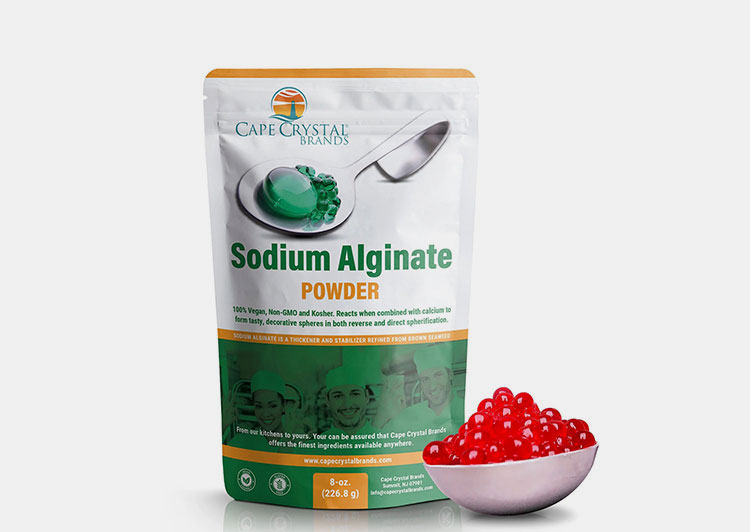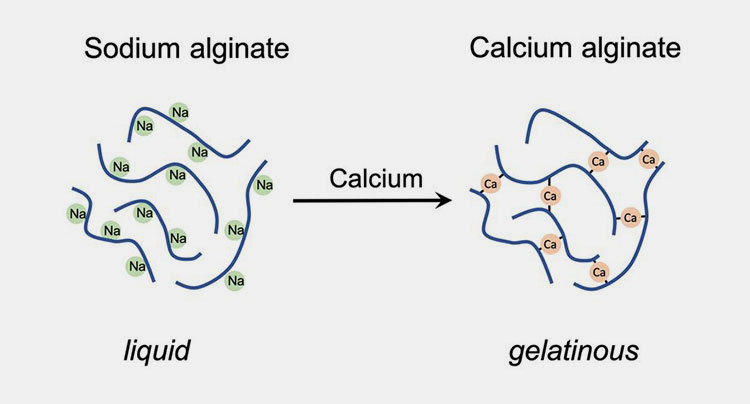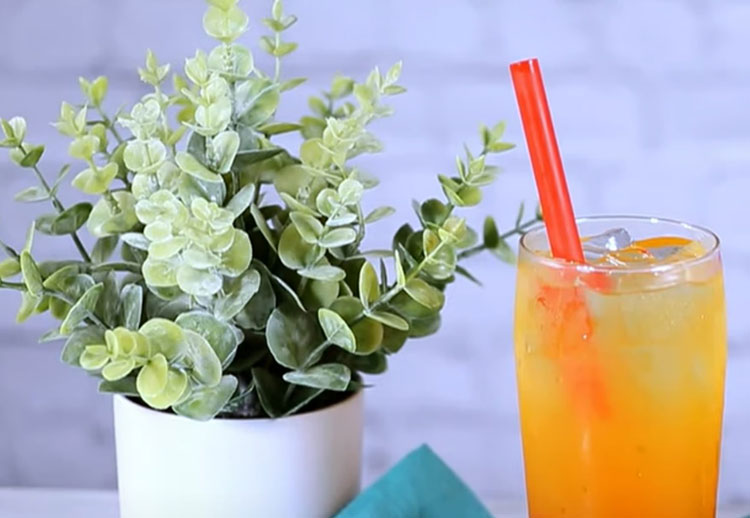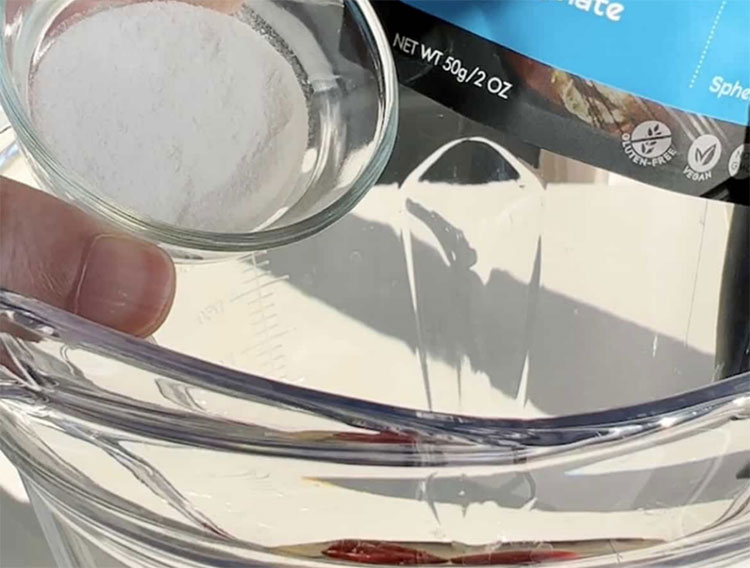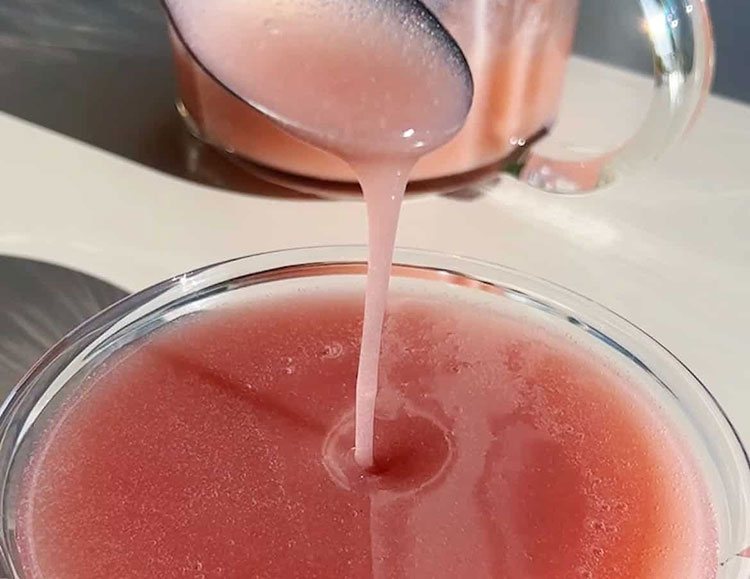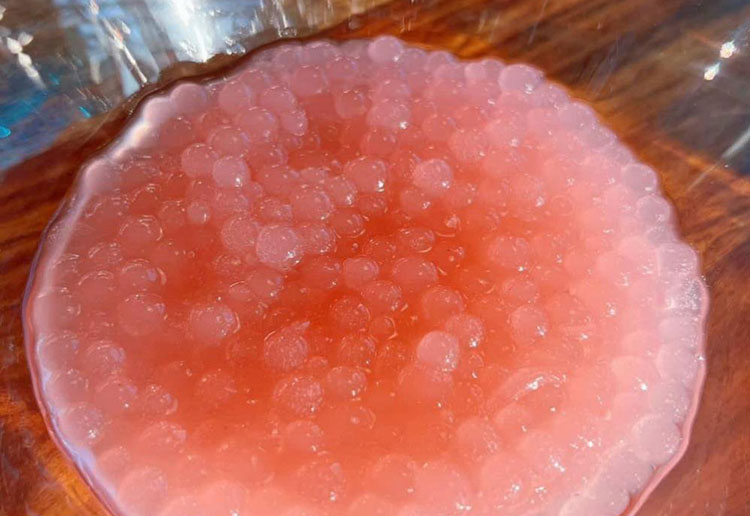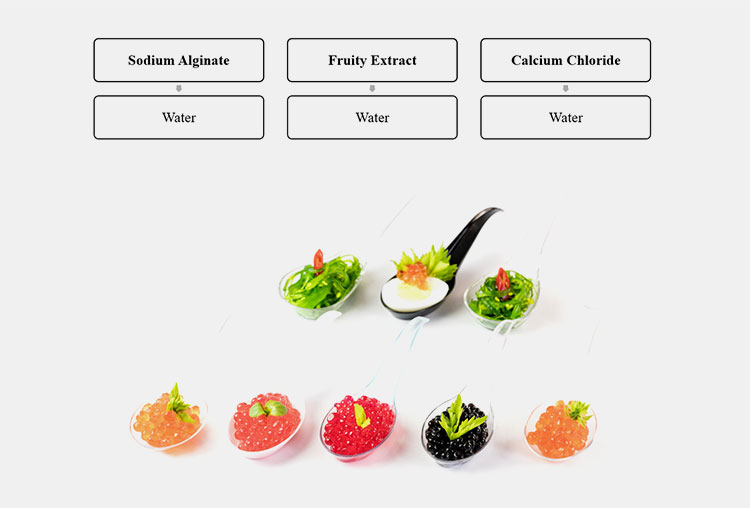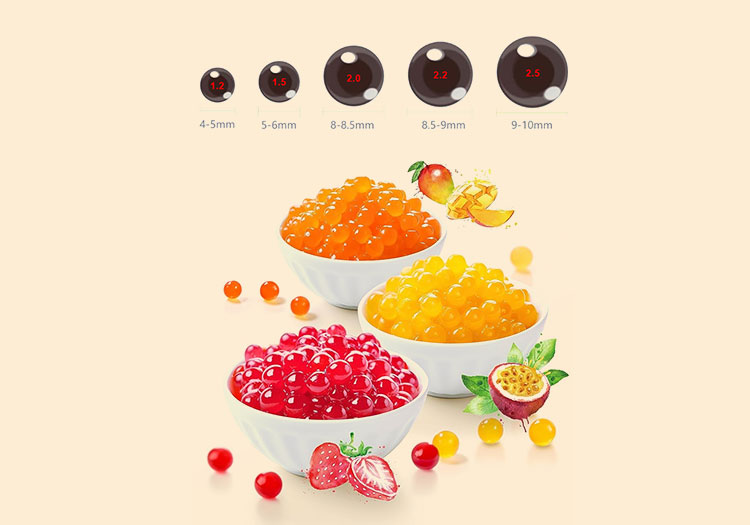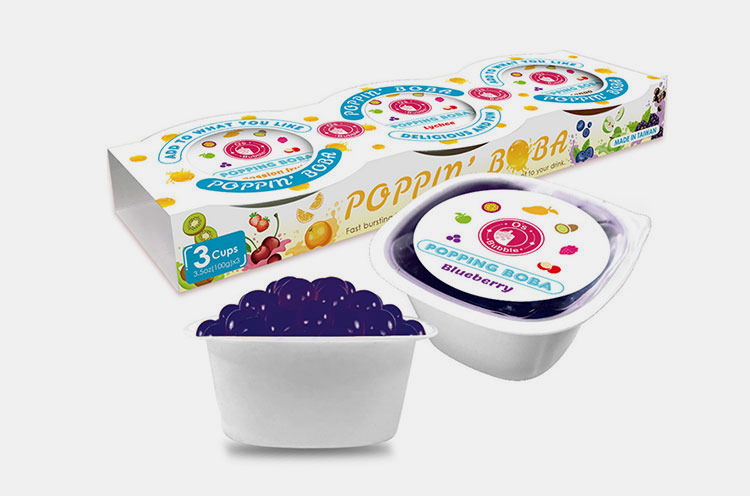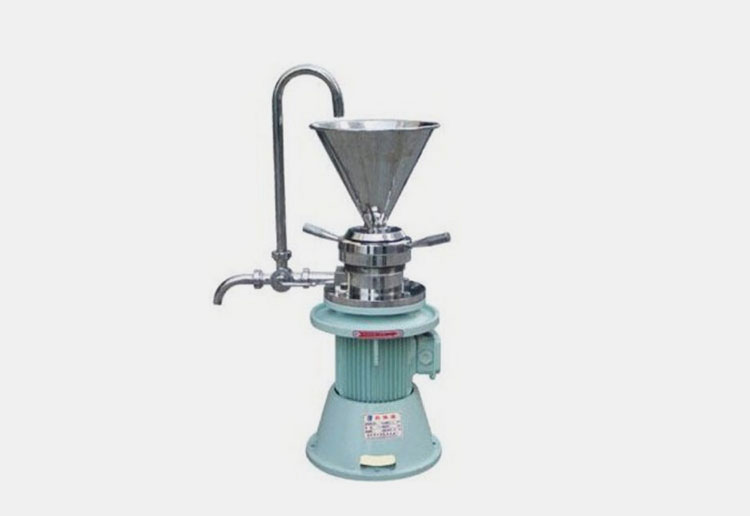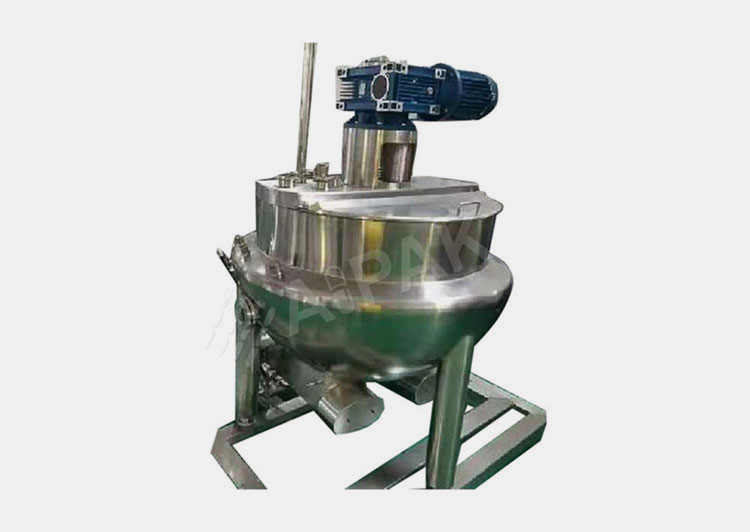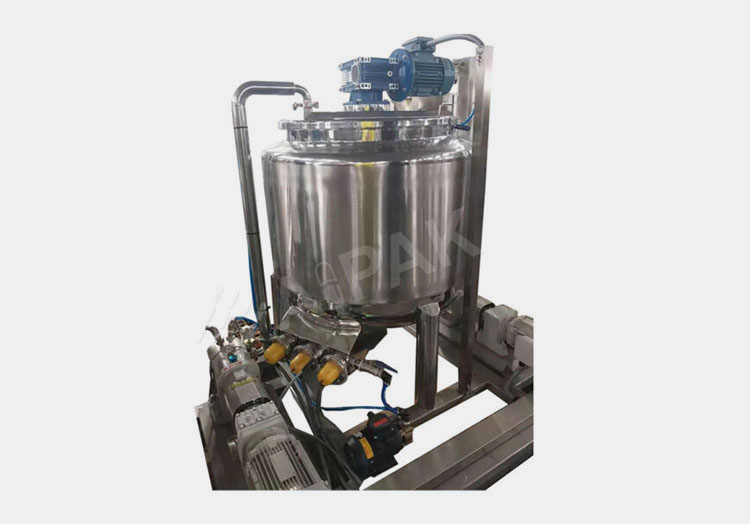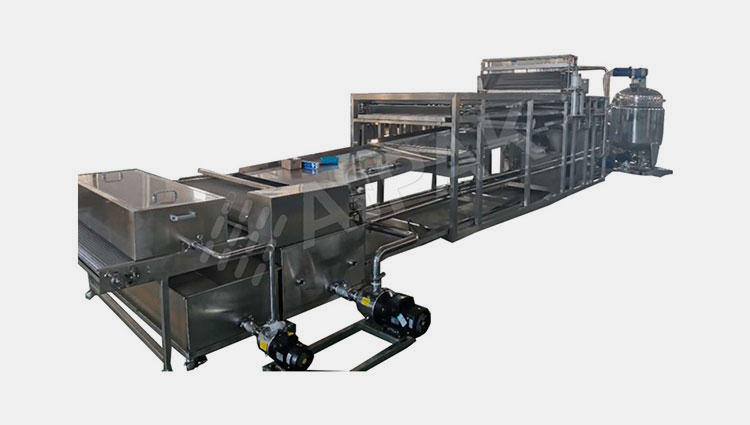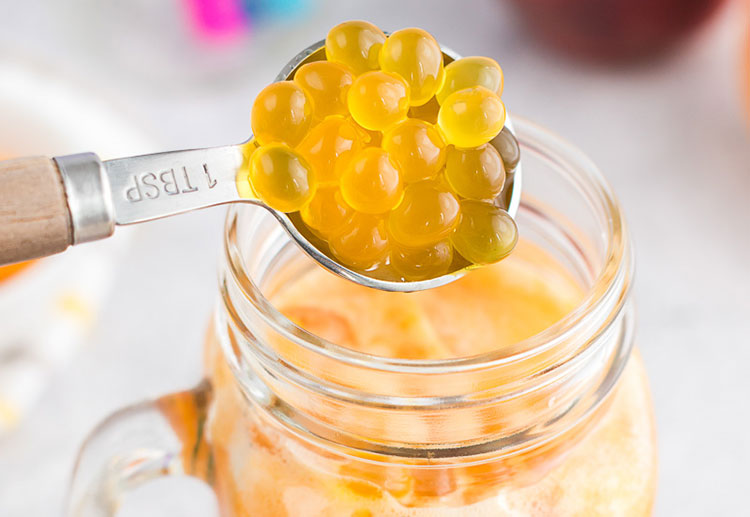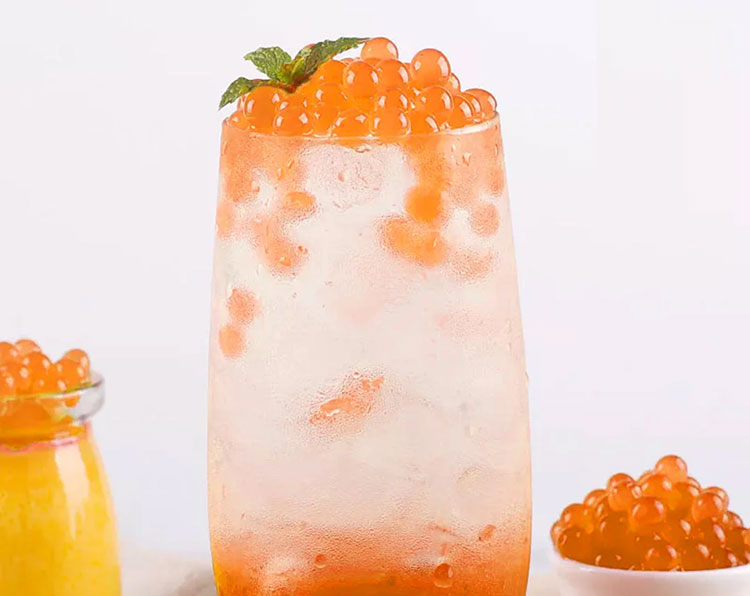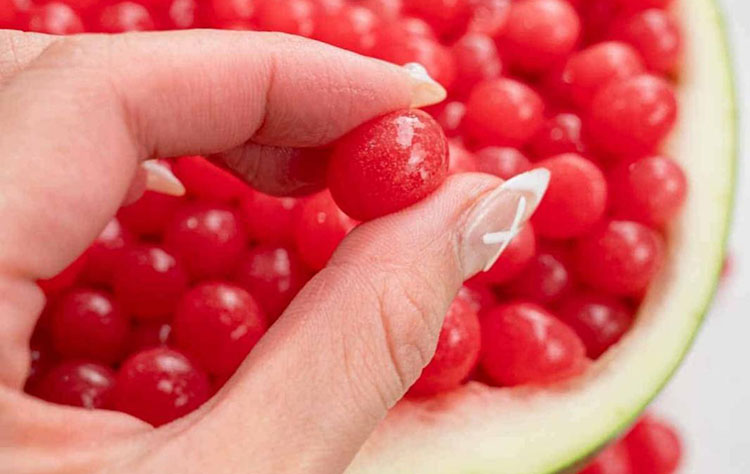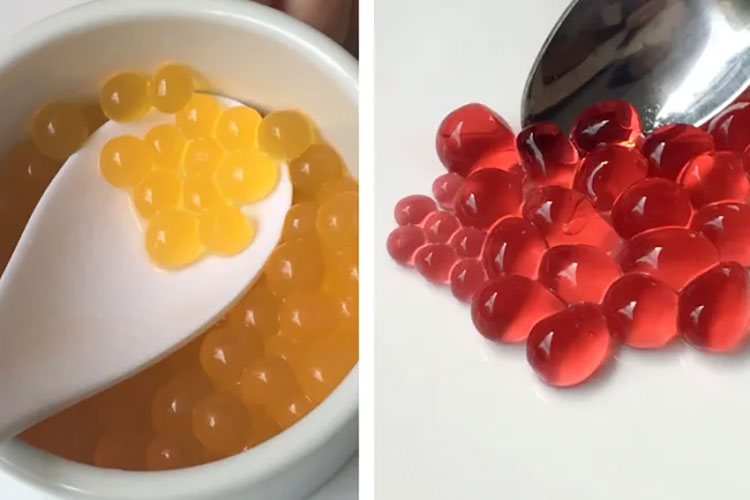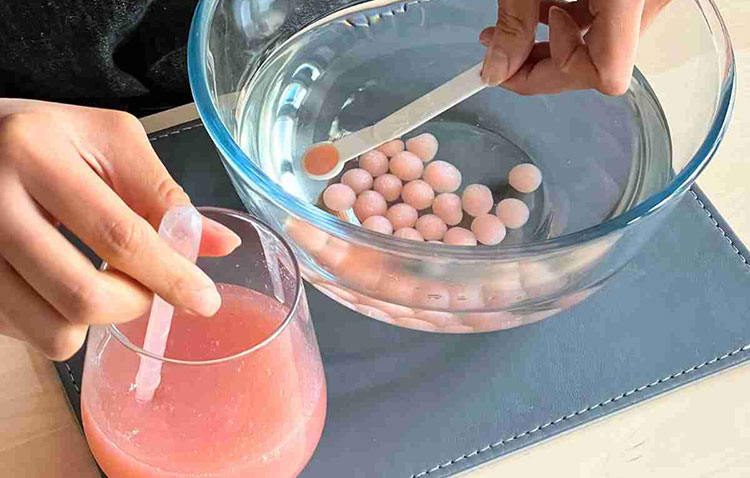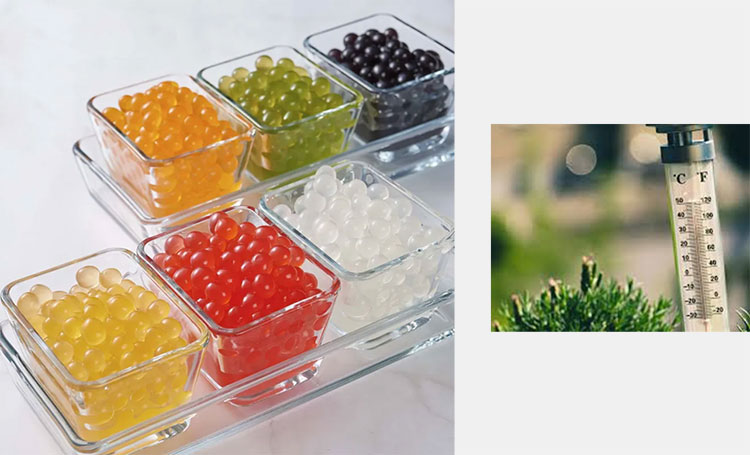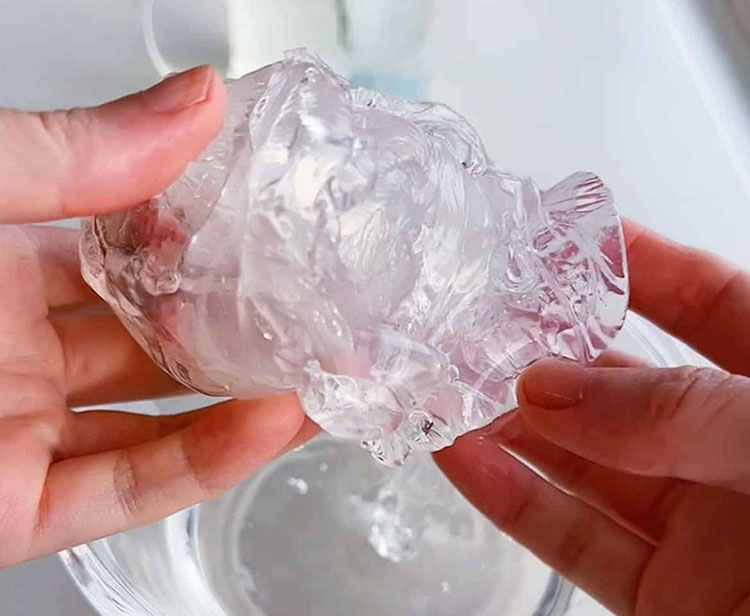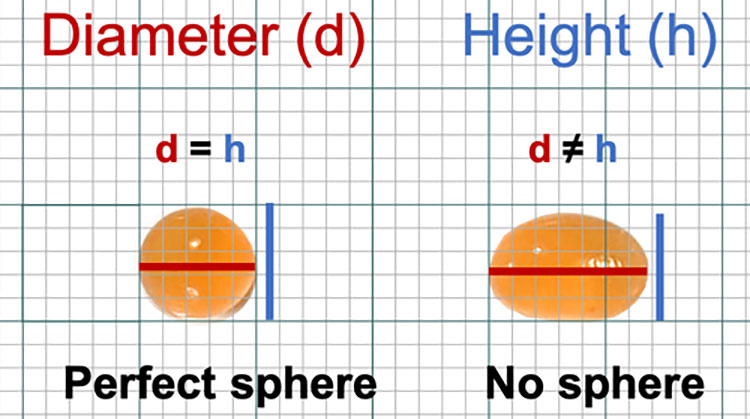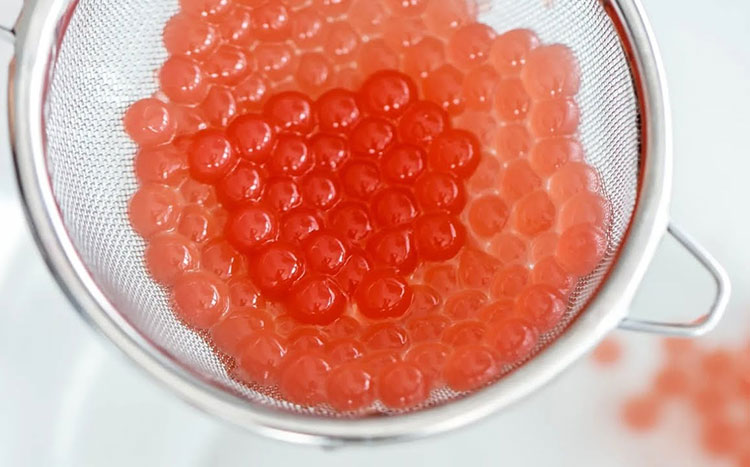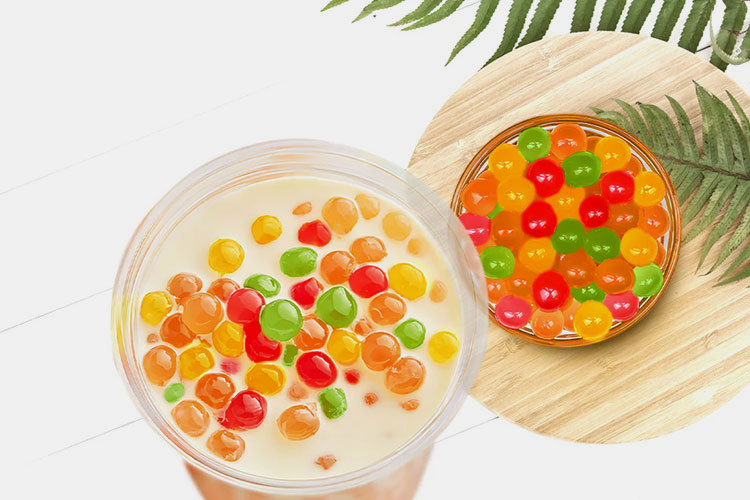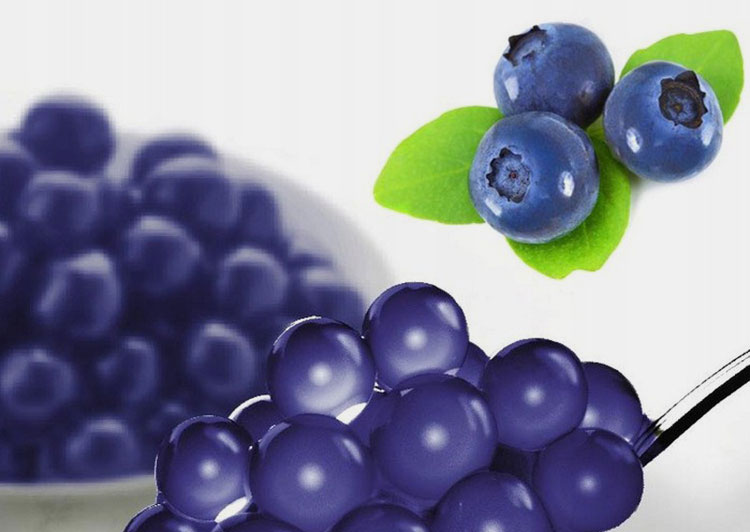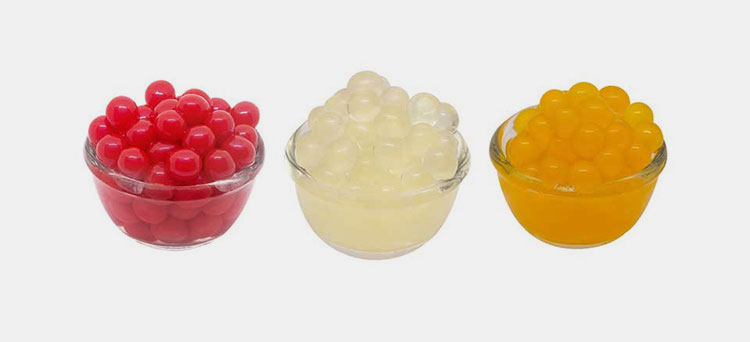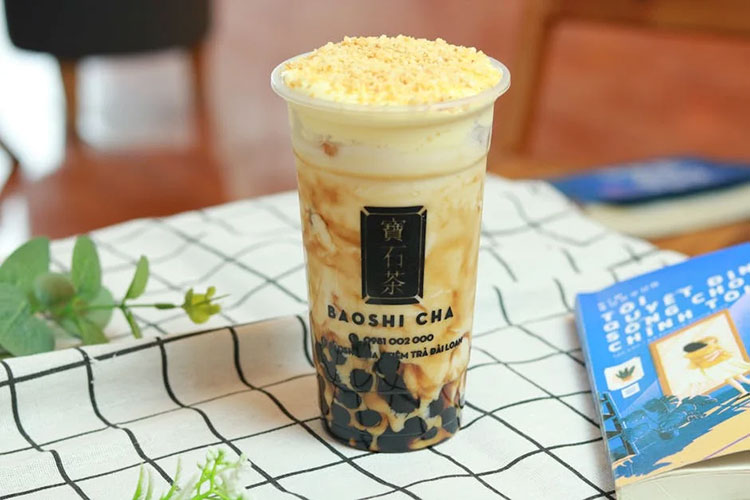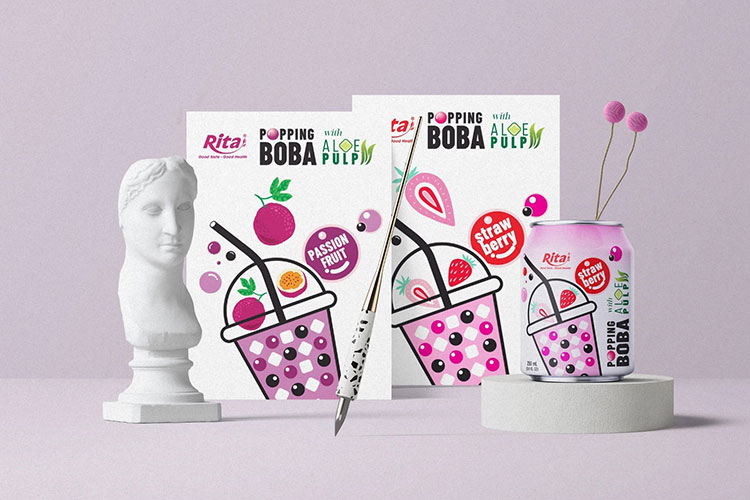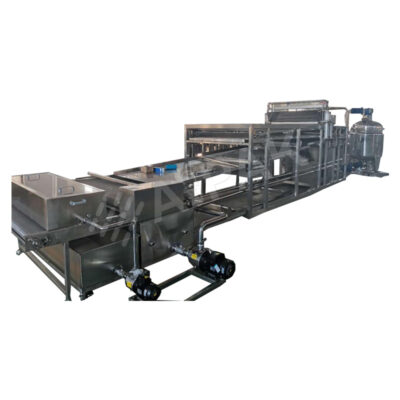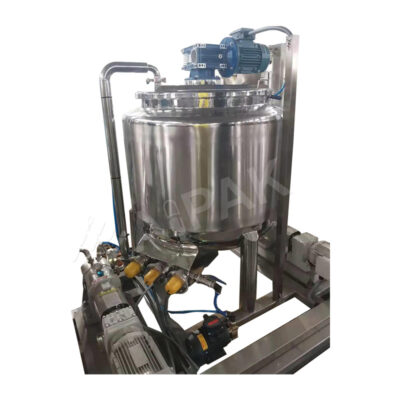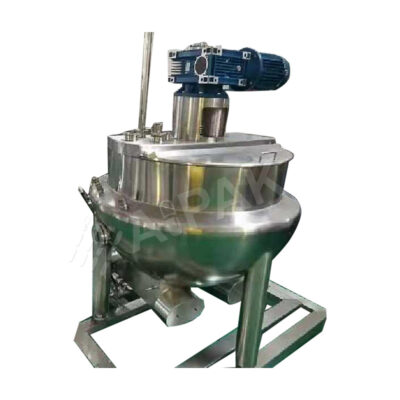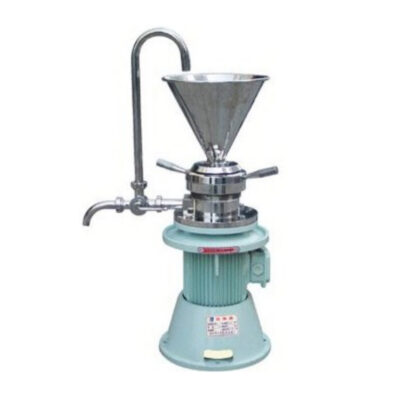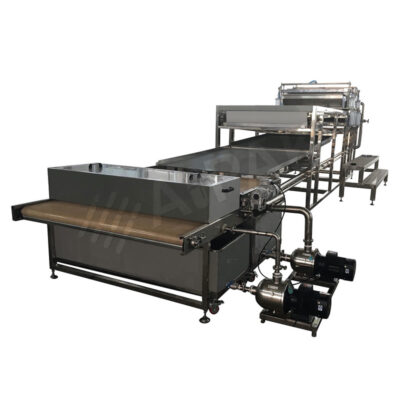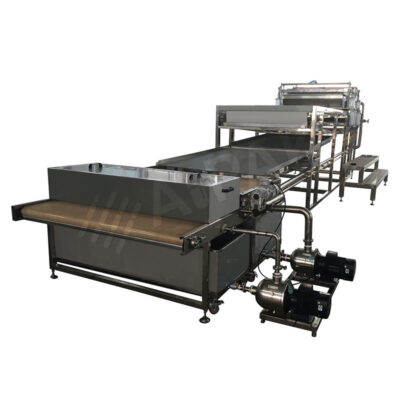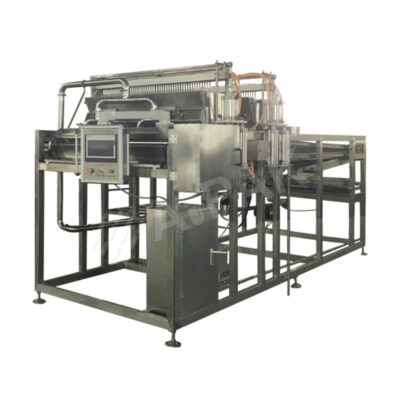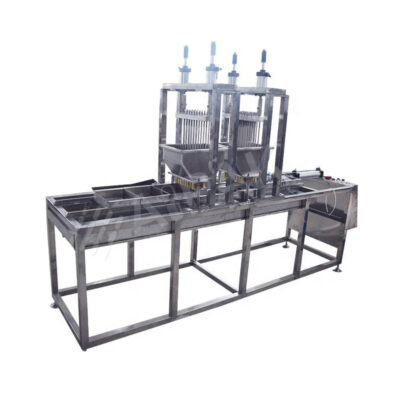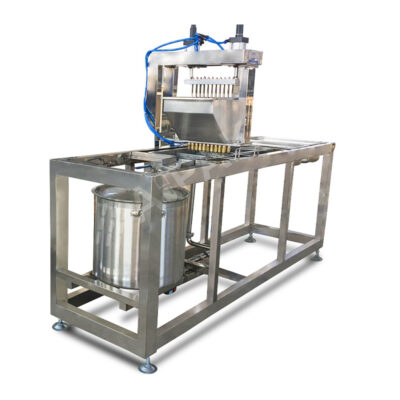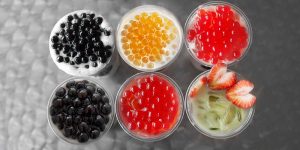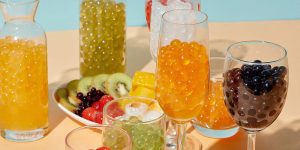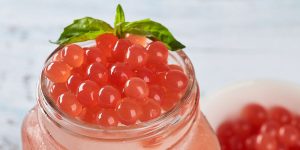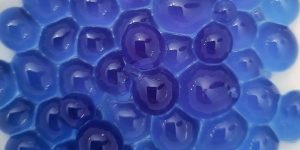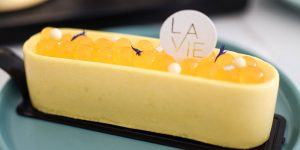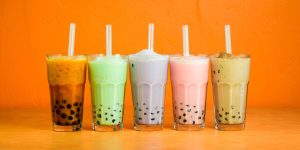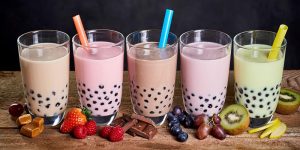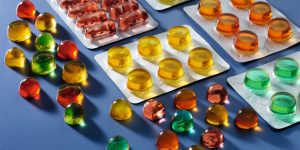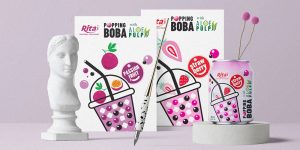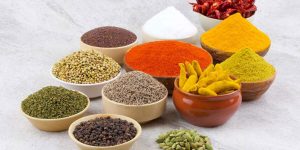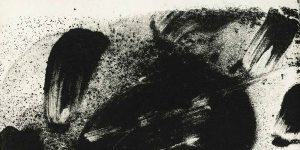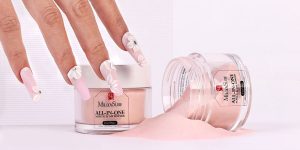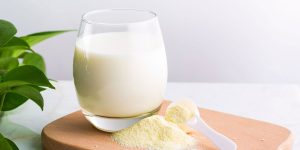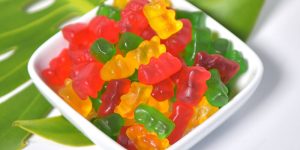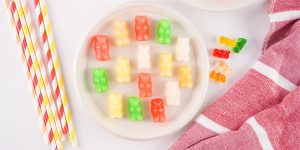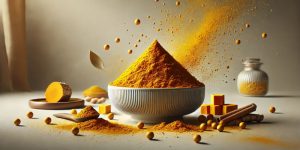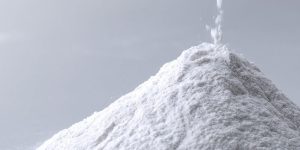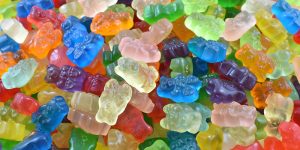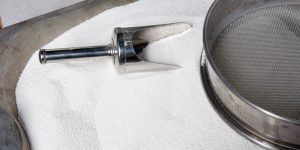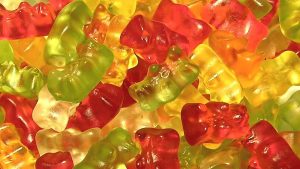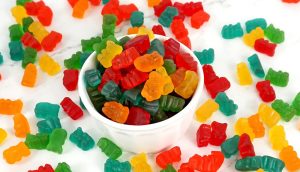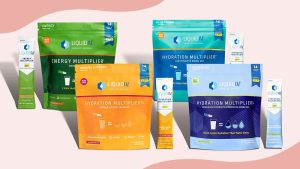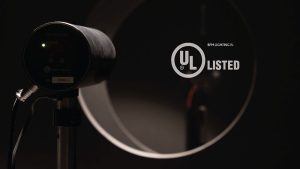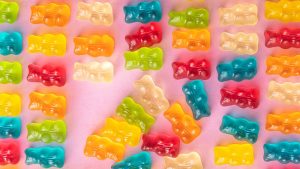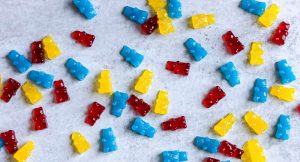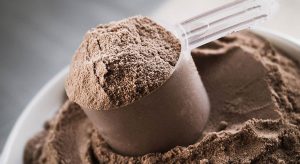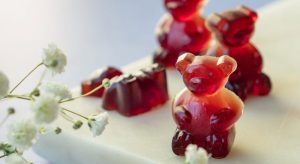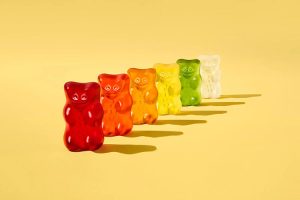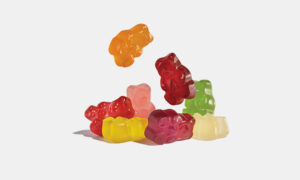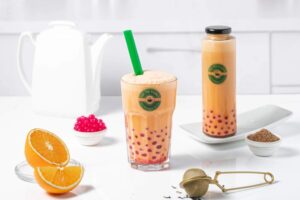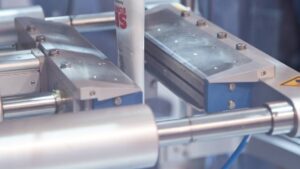How To Make Popping Boba?
Ever thought about the secrets behind the bursting flavors and attractive colors of popping boba? Many individuals favor sweet and refreshing popping boba in summer but few of them are interested in learning about its manufacturing.
Although people try to make it at home for fun, its industrial-scale production often requires strict manufacturing conditions, specialized productions, optimized reactions, and stringent quality standards for ideal pop.
Undoubtedly, manufacturers use several high-speed machines, mixers, and more to transform simple powders into thousands of pearly flavored-pack beads. So, let’s jump into an enchanting and magical world of popping boba creation and learn how these lovely beads make their way into your favorite snacks, beverages, and desserts.
1.What is popping boba?
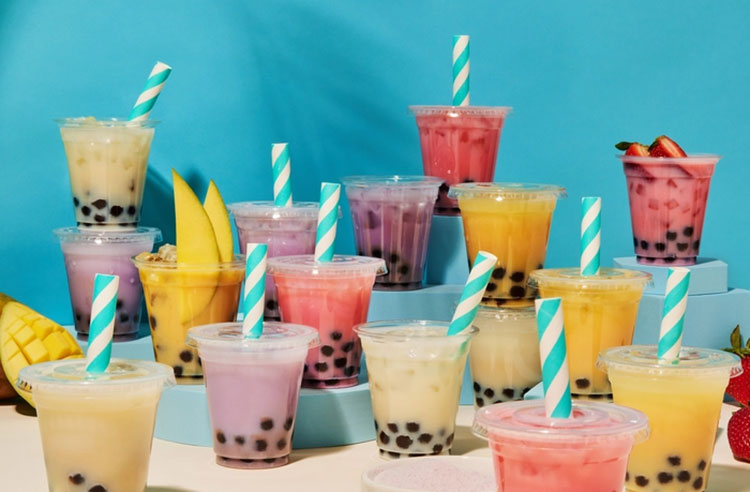
Popping boba- Picture courtesy: Thoughtfully
You also know these little bubbles by the name of popping pearls, bursting boba, boba popping pearls, popping baba, and fruit bubbles. They are quite identical to the boba present in bubble tea. But instead of forming from tapioca, these popping bubbles are produced from chemicals, such as sodium alginate and either calcium chloride or calcium lactate.
It is a tiny gel-like sphere, loaded with fruit juice, and bursts when you take its bite. Its outer coat is formed by a seaweed coat or gummy skin. And you would be amazed to learn that it is not too sweet but has a surprising variety of flavors.
It traces back its origin to Taiwan, where it was first introduced to the world culinary scene in the 1980s. Today, you can add these tiny balls to enhance the taste of your bubble tea, frozen yogurts, shaved ice, and smoothies.
2.What are the key ingredients of making popping boba?
Are you interested in making popping boba? To unravel the secrets of popping boba, you have to learn about its core ingredients. Then let’s discover some important ingredients that combine to form these juicy fun-filled spheres before getting into the actual making process.
Sodium Alginate
Sodium Alginate- Picture courtesy: Cape Crystal Brand
It is a naturally occurring compound and is a polysaccharide (a form of carbohydrate). Yes, it is extracted from marine brown algae. It is also found in the bacteria inhabiting soils. But mainly it is obtained from seaweeds or algae present in chilly northern seas.
The gel-like consistency of popping boba is majorly due to sodium alginate. You can think of it as a thickening agent. Usually, it creates a thin membrane around juice when contacts calcium ions. Its viscosity is linked to the thickness of the coat.
It is a main ingredient that imparts a popping effect to popping boba.
Calcium Chloride or Calcium Lactate
Calcium Chloride or Calcium Lactate- Picture courtesy: Science Buddy
These minerals act as cross-linking agents. They are responsible for starting of gelatinousness reaction when they react with sodium alginate. They form a boba outer shell when come in contact with sodium alginate. Although, calcium chloride is vastly incorporated in popping boba formulation; however, it has a slightly bitter taste.
Hence, manufacturers as well as individuals at home favor calcium lactate for its milder and neutral taste. It is a secret component that makes magic happen.
Liquid of Choice
Liquid- Picture courtesy: Bubble Tea Empire
The base or inner component of popping boba is only because of liquid. It serves a liquid content and offers the delicious and appetizing flavor of popping boba. You can add any liquid of your choice- whether fruit juice, puree, coffee, or even soda. Have fun experimenting with exciting flavors. You can use small quantities of water to dissolve ingredients like sodium alginate and calcium chloride/lactate. It is best to utilize filtered or dechlorinated water.
Sugar (Optional)
Sugars- Picture courtesy: Tachiz
The addition of sugar depends upon your choice. Often people add sugar to balance the tarty or bitter flavor of fruit juices or coffee. You can either use white sugar, honey, or even artificial sweetening agents.
3.How to make popping boba?
People across the globe are taking an interest in culinary arts to have fun at home. So, you will see the trend in which individuals explore the molecular gastronomy of popping boba in your video feeds. If you’re one of those folks keen on experimenting with making popping boba, then here are some basic preparation steps for you:
Create a Calcium Bath
Calcium bath- Picture courtesy: msshiandmrhe
At first, you’ll prepare a calcium bath by taking either calcium chloride or calcium lactate and adding them to water, gently whisking the mixture till most of the powder is solubilized in water. Then allow it to set for four hours or overnight. Afterward, pass the solution through a stainer to remove any residues.
Make Sodium Alginate Flavoring Liquid Mixture
Sodium Alginate- Picture courtesy: msshiandmrhe
For this step, prepare your base liquid by using either real fruit juice, coffee, or soda. Then add sodium alginate to your liquid base. Stir the mixture vigorously until it becomes smooth and thick. You’ll see that the mixture has a jelly-like texture. Introduce water into the mixture and stir it until sodium alginate dissolves in the mixture.
At this stage, the mixture will be sticky and gel-like. Now, place the mixture in the fridge for 2 hours, allowing it to properly set.
Preparation of Popping Boba
Preparation of Popping Boba- Picture courtesy: msshiandmrhe
Now it’s time for the fun part. Once both mixtures are ready, you take a measuring spoon and place it in the calcium chloride/lactate mixture to moisten its surface. Afterward, draw the sodium alginate-liquid mixture using a dropper and gently fill the measuring spoon, almost to the top.
Next, slowly and delicately immerse the spoon into the calcium chloride/lactate mixture. Softly shake the spoon while immersed to aid in the formation and separation of spherical liquid pearls.
Rinsing of Popping Boba
Rinsing- Picture courtesy: msshiandmrhe
Before adding them to your desired treat, keep in mind to rinse the boba with cold water. In this manner, you can prevent further reactivity.
4.How to make popping boba on a large scale?
Explore the following major steps taken on the making of popping boba on a large scale right below:
Step 1: Cooking & Mixing of the Slurry
Cooking & Mixing
Cooking and mixing are a pivotal part of creating popping boba. First, you can make fruit juice by mixing desirable concentrations of dried fruit extract and purified water along with sugar. Secondly, blend sodium alginate with water to form a gelling consistency slurry. The prepared juice and sodium alginate should be mixed to form the final depositing slurry.
Thirdly, mix calcium chloride in purified water to form a stable water bath for sodium alginate, entire steps are kept on mild heat to quality dissolve. The mixing should be thoroughly done to ensure entire all ingredients are equally distributed and well-mixed to give quality outcomes.
Step 2: Deposition of Popping Boba
Deposition of Popping Boba
This is simply a crafting of popping boba which happens by a depositing machine. A game-changer phenomenon happens when small droplets of size 4-5 mm to 9-10 mm are dropped down into the already prepared calcium chloride water bath. Here, the spherification takes place means when both phases come in contact with one another, the chewy texture small ball is created.
Step 3: Washing
Washing
To remove the chances of impurities or any unwanted substances, the popping boba is exposed to rinsing with clean and cold water to ensure satisfactory production.
Step 4: Packaging
Packaging- Picture courtesy: OS Bubble
Popping boba is now finally subjected to the packaging stage where decided packaging materials and machinery under a controlled environment can pack the optimized quantity of prepared boba into the following tubs or materials to maintain the quality and taste of the product.
5.What equipment do you need for making popping boba in the industry?
There is a set of equipment used in making popping boba for crafting professional and attractive shapes of popping boba that everyone would love. Let’s see the list of machines involved in its working.
Colloid Mill
AIPAK Popping Boba Colloid Mill
The tool is best known for catering to the finest grinding of the various slurries either semi-solid or entirely liquids. The structural design of the colloid mill has taken place in a way that fixed and rotary teeth of the unit generate high-impact shear forces for super-emulsion, grinding, and dispersion of the subjected mixture.
Dissolving Cooker
Dissolving Cooker
For dissolving the components of the mixture, a dissolving cooker is used that helps in the solubilizing of the ingredients with subtle stirring of the solution to avoid coagulation of sugary materials. The unit is either operated by steam heating or electric heating with facilitated scrapers that keep agitating around the walls of the tank to reduce the chances of dead ends and offer excellent mixing.
Storage Tank
AIPAK Popping Boba Cooling and Storage Tank
The cooling and storage tank is a ‘must-have’ unit that is mainly used to drop the temperature of the mixture. The machine is facilitated with a cold circulatory piping system that ensures flows of cold water which catalyze the process of lowering the temperature. Also, it helps in the storing of solutions often required for certain periods without any temperature fluctuations.
Popping Boba Machine Production Line
AIPAK Popping Boba Production Line
The popping boba machine production line is the turning point unit which is composed of a depositing unit, a convey system with a washing or bathing trays system. The machine is a highly advanced version where you just need to infeed the protocol by using a touch screen. The unit itself picks and drops the desirable concentration and sizes of popping boba balls by using depositing nozzles. The prepared balls are dropped into the calcium chloride bath which is transferred to washing by the help of a conveying system.
6.How do you make different colors when making popping boba?
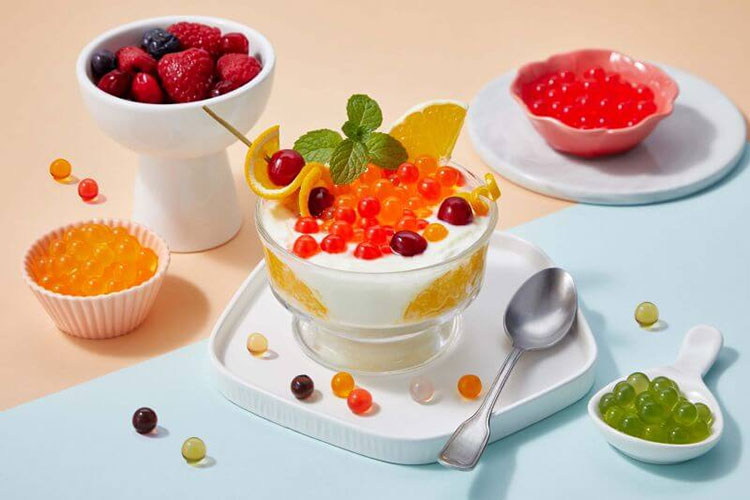
Vibrant colors- Picture courtesy: Tachiz
Yes, you can make popping boba with various fun colors to give them a more sensational and appealing look. This makes your desserts and bubble tea more pleasurable. So, let’s learn how can you have popping boba with a vibrant color combination.
The secret to attractive color options is food coloring. It could be either natural or synthetic. It could be red, yellow, green, or blue. If you want all-natural and healthy boba, make sure to use natural colors obtained from beet juice, turmeric, saffron, matcha powders, and blueberry.
For making boba popping diverse colors, you simply have to add 1-2 drops of food coloring to your liquid base mixture before mixing it well with sodium alginate. If you wish to create popping pearls with more saturated and intense colors, then incorporate gel-type food colors into your mixture.
7.What is the 30-30 method of making popping boba?
It is worth clarifying that the “30-30 method” is not actually a worldwide standardized term for making popping boba. However, it usually refers to the timing of preparing ingredients when you’re concocting popping bubbles. Here is a breakdown of this approach.
30 Minutes for Settling Sodium Alginate Mixture
30 30-minutes method- Picture courtesy: Bubble tea canada
The first 30 refers to 30 minutes in which you’ve to rest sodium alginate and liquid mixture. During the stirring of the said mixture, a tiny amount of air gets introduced to it, which results in inadequate texture and shape of the popping bead.
Consequently, it is recommended that you let the sodium alginate and liquid mixture sit for at least 30 minutes so that air is eliminated from your mixture. In this way, you’ll produce smoother and globular boba.
30 Seconds for Gelling in the Calcium Bath
Calcium bath- Picture courtesy: The tea planet
When you submerge your spoon with the mixture into a calcium bath, then you’ve to wait for 30 seconds to create a perfect tiny delicate popping shell. However, if you dip this mixture too long in a calcium bath, then the resulting boba coat will be much thicker and have a rubber-like texture. On the other hand, withdrawing it quickly from the bath gives rise to easily breakable boba.
8.How can you adjust the texture when making popping boba?
Do you want your boba with thicker shells or do you favor delicate covering? The choice is up to you. No matter what, here are some suggestions for you to make their texture as perfect as you like.
Softer and Delicate Popping Boba
Softness in popping boba- Picture courtesy: Catherine Zhang
In order to make popping pearls with a thinner membrane, it is recommended to use less amount of calcium chloride/lactate in water. For example, this quantity could be around 0.8g per 100ml of water rather than 1g.
Moreover, you should keep the bubbles for a short time in water for 20-30 seconds. This allows you to have a thinner boba coat opt for calcium lactate instead of calcium chloride to obtain a softer membrane. Also, you should lower the ratio of sodium alginate in a liquid base. It will increase the fluidity of the mixture, resulting in a more liquid core.
Thicker and Strong Popping Boba
Thick Popping boba- Picture courtesy: Everychus Day
If you desire your bursting boba to hold in a drink without popping, then you will want to increase the ratio of calcium chloride/lactate to water like 1.2g per 100ml of water. Furthermore, prolong the setting time of boba in the calcium bath for 60 seconds.
Also, make your sodium alginate and liquid mixture thicker by adding more sodium alginate to the liquid of your choice. This will create a tough shell. Use a slightly chilled calcium bath as low temperatures decrease reactivity and result in firmer shells.
9.What is the ideal water-to-boba ratio when making popping boba?
Water Content in Popping Boba- Picture courtesy: Honest Food Talk
Want to get your boba just right? Then getting the right water ratio is super important. Because it’ll prevent them sticking and popping right after taking them out of the calcium bath.
Water Ratio for Calcium Bath
For a calcium bath, your ideal water ratio would be 100ml of water per 1g of calcium chloride or calcium lactate. You will have to utilize about 500 ml or 2 cups of water so that popping pearls will form uniformly.
Water Ratio for Sodium Alginate
No one wants a boba with an irregular shape. Hence, the perfect proportion of sodium alginate is 1 g of powder in 100 ml of flavored liquid. For this, you can incorporate about 200-300ml (1 to 1.5 cups) of choice of liquid. This will help you to achieve smooth consistency.
10.What is the best fruit juice for making popping boba?
To infuse their popping boba with vibrant, juicy, and mouthwatering fruit flavors, most individuals opt for fruit juices. Here are some common fruit juices that offer a super fruity taste to popping pearls.

Fruity popping boba- Picture courtesy: Tachiz
- Mango
- Strawberry
- Watermelon
- Peach
- Blueberry
- Lychee
- Cherry
Still, it is essential to strain your fruit juice to avoid pulp, as it can disrupt boba creation. Also, you should try to avoid the use of citrus, cranberry, or pomegranate juices, as they are very acidic and sour and need pH fine-tuning.
11.What is the ideal water temperature for making popping boba?
Popping Boba Making Temperature
Water is a major ingredient in popping boba and impacts its consistency and flimsiness. So, it must have an ideal temperature to have perfect spherical pearls. The ideal temperature of water for each step is as follows:
Temperature of Calcium Bath
The calcium bath is the solution of calcium chloride/lactate with water and it should be at a room temperature of around 20–25°C / 68–77°F. The reason for this temperature is that if it is too cold, then the formation of spherical popping boba decreases causing flimsy membranes.
In contrast, if the temperature is too high, then popping boba is formed too quickly, which makes the boba shells thicker and rubbery.
Temperature of Sodium Alginate Mixture
Its temperature should be slightly warm around ~25–30°C / 77–86°F. This is because warmer liquid tends to solubilize sodium alginate swiftly. However, having a very hot temperature creates lumps of powder in the mixture.
12.What are tools used for making popping boba spherical?
Spherical Popping Boba Making- Picture courtesy: Science Buddy
You can conveniently make popping boba round and spherical with a syringe. As compared to a dropper or measuring spoon, it is an effective tool. Syringes help you control the droplet size of the sodium alginate mixture, consequently, you’ll have rounder and consistent popping pearls.
For preparing bigger boba, you should employ a bigger syringe with having capacity of 10ml-20ml. Whereas, smaller syringes with a capacity of 3ml-5ml are suitable for crafting mini boba. You just suck the liquid mixture in syringes and then keep them just over the surface of the calcium bath. Then carefully press out the liquid drop-by-drop.
13.What are the common mistakes to avoid when making popping boba?
Mistakes are part of the popping boba-making process but you should know that even the tiniest blunder can ruin the texture, shape, or exploding effect of boba. Some of the slipups to avoid when preparing popping boba are as follows:
Forgoing Setting Time for Sodium Alginate Mixture
Setting Time for Sodium Alginate Mixture- Picture courtesy: Ms Shi and Mr He
Mixing sodium alginate in the desired liquid can cause the entry of air bubbles in your mixture. These bubbles interfere with boba formation, resulting in their irregular shape.
Remedy
It is fairly easy to solve this mistake by simply letting the sodium alginate mixture stand for 30–60 minutes. It’ll surely lead to the discharge of air from the blend.
Inadequate Liquid Mixture Dropping Height
Dropping height- Picture courtesy: Science buddy
It is a quite common mistake that happens when you drop your liquid mixture from an incorrect distance in a calcium bath. If your dropping height is too high, then your resulting balls will be flattened and won’t have a characteristic round shape. Alternatively, if the dipping height is too low, you’ll notice that your boba has formed clumps by fusing together.
Remedy
To have even and rounder orbs, you just have to hold your dropper at a level that is just above the surface of the calcium bath.
Poor Rinsing of Popping Boba
Rinsing- Picture courtesy: China Sichuan Food
Experts advised to correctly rinse the formed boba globe. Failure to do so would result in leftover calcium on the boba ball that leaves a bitter aftertaste when consumed.
Remedy
So, you must thoroughly wash the popping boba with cold water instantly after taking it out from the calcium bath.
Failure to Adjust Juice pH
pH of Popping Boba- Picture courtesy: OrientalTeaBox
Some fruit juices, for example, oranges, pineapple, grape, blueberries, and limes are quite acidic. Using these fruit juices often prevents the happening of spherification reaction. This means you won’t be able to have spherical balls, as acidic components interfere in the reaction of sodium alginate and calcium ions.
Remedy
Rest assured; you can easily fix this blunder by adding sodium citrate in fruit juice before blending it with sodium alginate. This helps in neutralizing acidity.
14.How to store popping boba for a long time?
Storing popping boba- Picture courtesy: Coldsea
As popping boba has a delicate consistency, so you’ve to properly store it for use for a long time. Otherwise, you’ll not get the desired flavor and popping quality. Here are some best storage instructions for you to make the best use of your prepared or shopped boba:
Short Time Storage
Short time storage- Picture courtesy: COLDSEA
This refers to a maximum of 2 days of storage of popping boba. Generally, it is suggested for fresh homemade boba. For this, first, you should put your bursting boba into an airtight container, then pour sugar syrup, flavored juice, or water to completely submerge the boba. This stops it from drying out. Next, store the boba container in the fridge at 4°C (39°F).
Now, you can easily consume boba within 2 days without worrying about its freshness.
Medium-Time Storage
Medium storage – Picture courtesy: Projectboard
If you want to consume popping boba within 1-2 weeks, then you should move it to an airtight jar loaded with a sugary solution or a flavored liquid. Then add few drops of few drops of lemon juice or natural preservatives (like citric acid or ascorbic acid). This extends its shelf-life. Afterward, put your jar in the refrigerator at 4°C (39°F).
Long-Term Storage
Long term storage- Picture courtesy: RITA Beverage
It involves freezing popping pearls so that you can consume them in a 6 month time. You’ve to load boba in a sealed and airtight container but only a hint of syrup. Now freeze it at -18°C (0°F). However, the downside of this method is it alters the texture of boba.
Conclusion
In a nutshell, the trend of making popping boba is everywhere, especially on social media. Many individuals are trying their hand at this fruity bubble concoction to create something new and fun. However, making popping boba at home or in factories needs the right ingredients, proper mixing approaches, just the optimal balance of ingredients, and accurate setting time. Mastering the correct proportions, water temperatures, and preparation technique is an art that helps you craft popping bubbles that explode with bursts of mouthwatering flavors on just taking a small bite. Now that you uncovered every mystery behind these pearly orbs, it’s time to make your own fun-filled popping boba. For more information, please contact AIPAK team by sending us a message.
Don't forget to share this post!
Popping Boba Machine Related Products
Popping Boba Machine Related Posts
Popping Boba Machine Related Videos
CONTACT US
Tell us your raw material and project budget to get quotations within 24 hours.
WhatsApp Us: +86 181 6426 8586
Want the best price & newest pharmaceutical machinery buying guide,tips and trends sent straightly to your box?Sign up for AIPAK’s monthly newsletter,we’re free for your consultation and Offer you the most suitable solutions!
The Buyer's Guide
- Capsule Filling Buyer's Guide
- Blister Packaging Buyer's Guide
- Tablet Counting Buyer's Guide
- Tube Filling Buyer's Guide
- Cartoning Buyer's Guide
- Gummy Making Buyer's Guide
- CO2 Extraction Buyer's Guide
- Empty Capsules Buyer's Guide
- Suppository Filling Buyer's Guide
- Tablet Coating Buyer's Guide
- Tablet Press Buyer's Guide
- Softgel Encapsulation Buyer's Guide
Most Popular
- 7 Importance Of Pharmaceutical Packaging In Different Applications You Must Know
- 6 Advantages You Must Know About Tablet Counting Machine
- 8 Advantages of Blister Packaging You Must Know
- 6 Critical Applications of Automatic Capsule Filling Machine
- 6 Stations You must Know to Improve the Filling Quality of Automatic Capsule Filling Machine
 Tell us your material or budget,we'll reply you ASAP within 24 hours
Tell us your material or budget,we'll reply you ASAP within 24 hours

